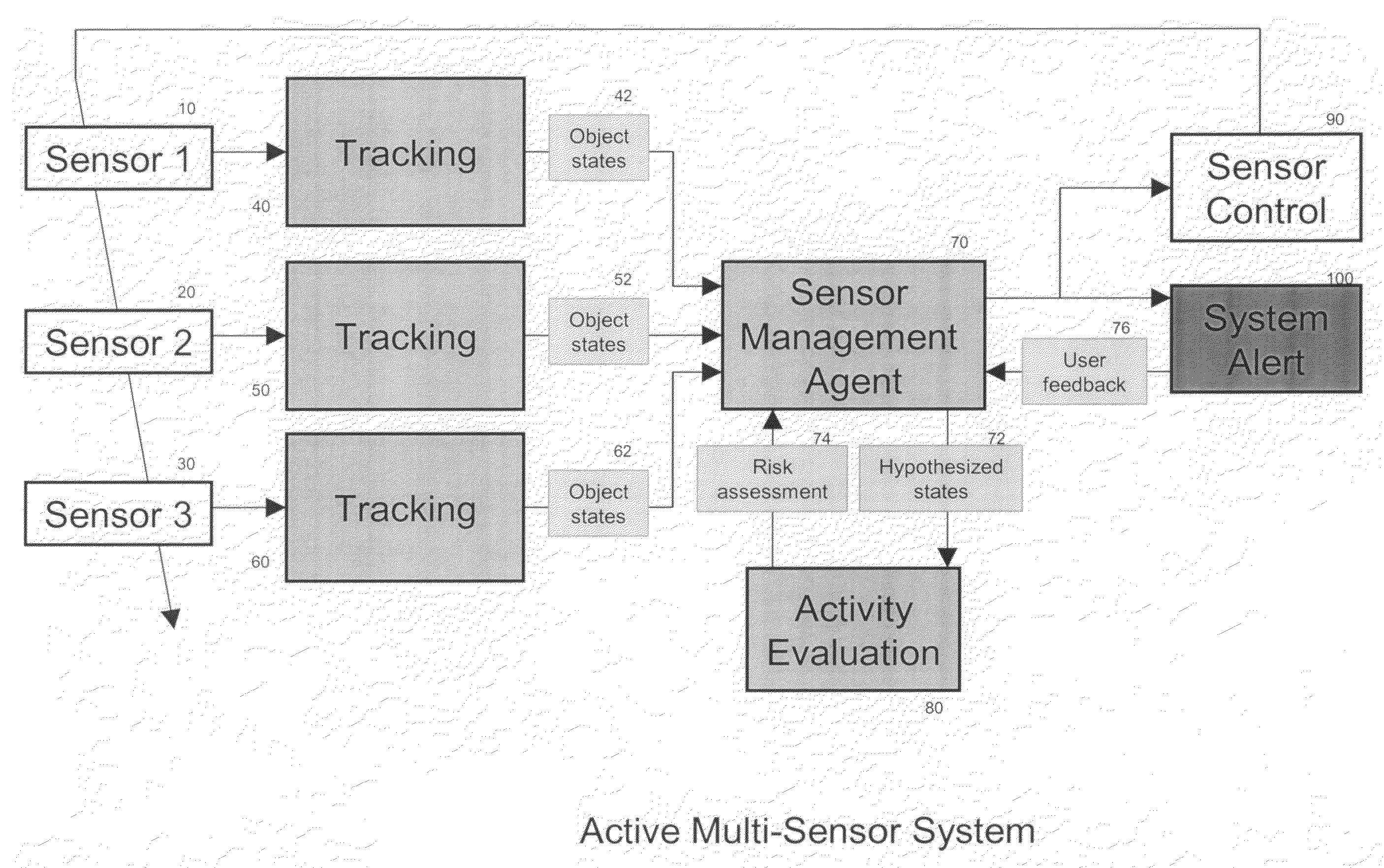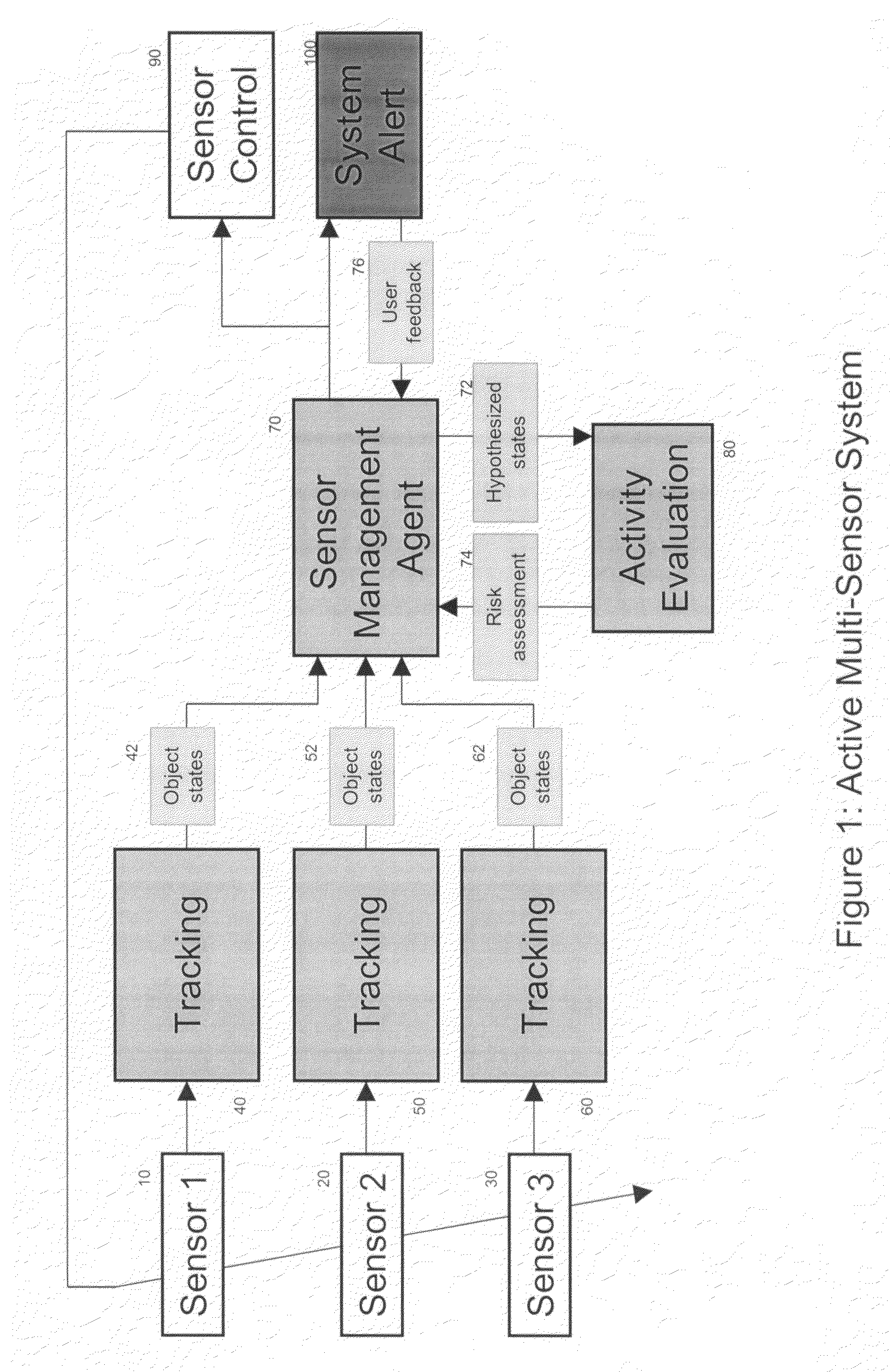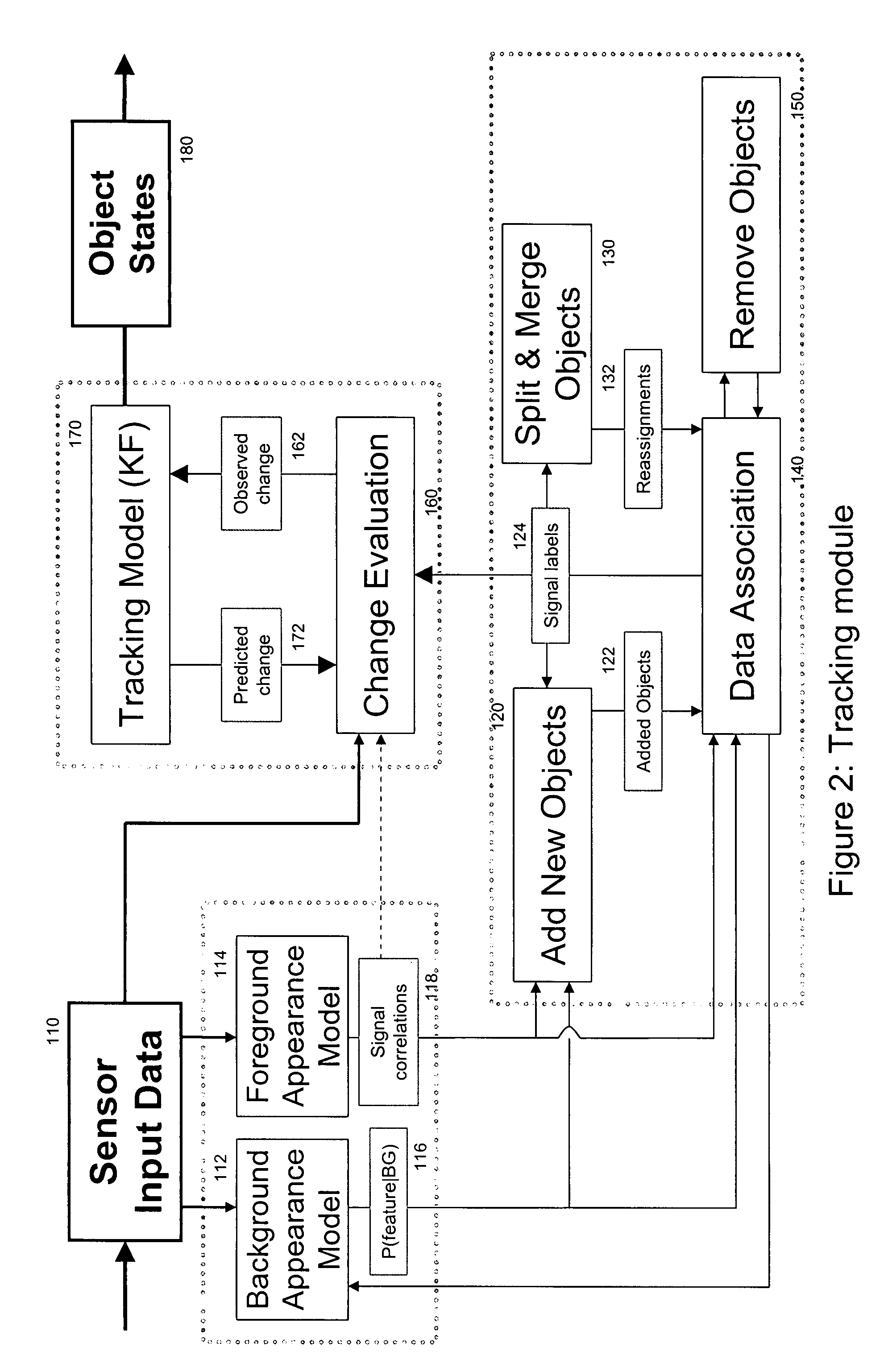Sensor exploration and management through adaptive sensing framework
- Summary
- Abstract
- Description
- Claims
- Application Information
AI Technical Summary
Benefits of technology
Problems solved by technology
Method used
Image
Examples
Embodiment Construction
[0021]The instant invention was created to address the real-world need for predictive analysis in systems that determine policies for alerts and action so as to manage or prevent anomalous actions or activities. The predictive nature of the instant invention is built around the capture of data from any of a plurality of sensor suites (10-30) coupled with an analysis of the captured data using statistical modeling tools. The system also employs a relational learning method 160, system feedback (either automated or human directed) 76, and a cost comprised of a weighting of risk associated with the likelihood of any predicted action 74. Once anomalous behavior has been detected, the instant invention, with or without a user contribution 76, can formulate policies and direct actions in a monitored area 260.
[0022]The preferred embodiment presented in this disclosure uses a suite of audio and video sensors (10-30) to capture and analyze audio / visual imagery. However, this in no way limits...
PUM
 Login to View More
Login to View More Abstract
Description
Claims
Application Information
 Login to View More
Login to View More - R&D
- Intellectual Property
- Life Sciences
- Materials
- Tech Scout
- Unparalleled Data Quality
- Higher Quality Content
- 60% Fewer Hallucinations
Browse by: Latest US Patents, China's latest patents, Technical Efficacy Thesaurus, Application Domain, Technology Topic, Popular Technical Reports.
© 2025 PatSnap. All rights reserved.Legal|Privacy policy|Modern Slavery Act Transparency Statement|Sitemap|About US| Contact US: help@patsnap.com



